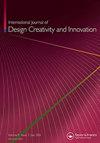解释和定制基于可供性的设计以用户为中心的实验
IF 2.5
Q4 ENGINEERING, MANUFACTURING
International Journal of Design Creativity and Innovation
Pub Date : 2020-01-02
DOI:10.1080/21650349.2019.1651675
引用次数: 4
摘要
在产品的初步设计阶段,识别、选择和考虑适当的功能支持在基于功能支持的设计(ABD)过程中起着至关重要的作用。一种名为基于可视性的交互式遗传算法(ABIGA)的设计工具通过让设计师识别虚拟原型的可视性,然后用户评估虚拟原型的可视性质量来进化产品。可见性被定义为可感知的交互,包括积极的和消极的,主要是在用户和工件之间。为了实现一个成功的产品进化,提出了指导方针,以帮助设计师在建立以用户为中心的设计和ABD相关的实验具体。研究发现,与没有冲突的能力相比,冲突能力的存在会导致进化速度较慢。同时,观察到虚拟呈现确实影响用户的判断。从这些观察,假设和多个实验,这些指导方针进行了讨论和批评,以提供设计师洞察如何控制以用户为中心的实验。本文章由计算机程序翻译,如有差异,请以英文原文为准。
Interpreting and tailoring affordance based design user-centered experiments
ABSTRACT The identification, selection, and consideration of appropriate affordances during the preliminary design phase of a product play a critical role in the process of Affordance Based Design (ABD). A design tool named Affordance Based Interactive Genetic Algorithm (ABIGA) evolves products by having designers identify, and then users assess the affordance qualities of virtual prototypes. Affordances are defined to be perceived interactions, both positive and negative, primarily between the user and the artifact. In order to achieve a successful product evolution, guidelines are proposed to help designers in the setting up of experiments related to user-centered design and ABD specifically. It was found that the existence of conflicting affordances would result in a slower evolution when compared with one that did not have such conflicts. Meanwhile, it was observed that virtual presentation does influence the users’ judgments. From these observations, hypotheses and multiple experiments, these guidelines are discussed and critiqued to provide designers with insight into how to control user-centered experiments.
求助全文
通过发布文献求助,成功后即可免费获取论文全文。
去求助
来源期刊

International Journal of Design Creativity and Innovation
ENGINEERING, MANUFACTURING-
CiteScore
3.80
自引率
27.80%
发文量
15
期刊介绍:
The International Journal of Design Creativity and Innovation is an international publication that provides a forum for discussing the nature and potential of creativity and innovation in design from both theoretical and practical perspectives. Design creativity and innovation is truly an interdisciplinary academic research field that will interest and stimulate researchers of engineering design, industrial design, architecture, art, and similar areas. The journal aims to not only promote existing research disciplines but also pioneer a new one that lies in the intermediate area between the domains of systems engineering, information technology, computer science, social science, artificial intelligence, cognitive science, psychology, philosophy, linguistics, and related fields. The journal covers, but is not restricted to, the following topics: ·Theories on Design Creativity and Innovation ·Cognition of Design Creativity ·Innovative Process ·Inventive Process ·Analogical Reasoning for Design Creativity and Innovation ·Design Synthesis ·Method and Tools for Design Creativity and Innovation ·Representation of Design Creativity and Innovation ·Education for Design Creativity and Innovation ·Concept Generation and Inspiration.
 求助内容:
求助内容: 应助结果提醒方式:
应助结果提醒方式:


